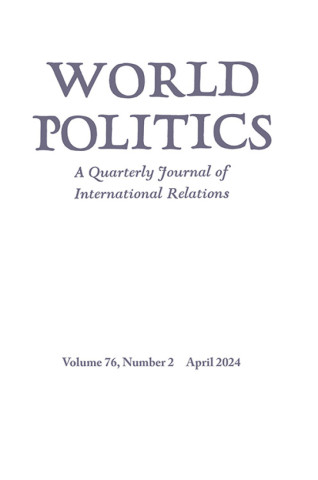The Analysis of Factors Affecting the Competitive Interaction of Iran and Saudi Arabia in the First Decade of the Revolution
IF 2.5
1区 社会学
Q1 INTERNATIONAL RELATIONS
引用次数: 0
Abstract
Islamic Republic of Iran and Saudi Arabia as two of the powerful countries in the Persian Gulf region have experienced various behavioral patterns in their interrelationship. After the Islamic Revolution, Tehran and Riyadh, which used to be bonded together due to some common identity and international system necessities, started facing each other. On the one hand, this resulted in disorder and imbalance of power in the region. On the other hand, the new identity of Iran was regarded as a challenge to Saudi Arabia’s religious legitimacy. In the current article it has been tried to identify the factors which led to tension and opposition between the two actors which were once collaborative and friendly; it has also been asked “what were the determining factors of the competitive action between Iran and Saudi Arabia in the first decade after the Revolution, and what were the consequences?” An answer to the question has been offered; “identity, geopolitical, and structural factors shaped the relationship between the two countries over the first decade after the Islamic Revolution and the confluence of the identity and geopolitical competition along with the structural pressure formed the competitive-oppositive patterns in their interrelationship.” This article is of descriptive-analytical approach and two material and social theories have been used as the theoretical basis of the article.伊朗革命第一个十年中影响伊朗与沙特竞争互动的因素分析
伊朗伊斯兰共和国和沙特阿拉伯作为波斯湾地区的两个强国,在其相互关系中经历了不同的行为模式。在伊斯兰革命之后,德黑兰和利雅得这两个曾经因为某种共同的身份和国际制度的需要而联系在一起的国家开始面对对方。一方面,这造成了该地区的混乱和权力不平衡。另一方面,伊朗的新身份被视为对沙特阿拉伯宗教合法性的挑战。在本文中,试图找出导致曾经合作和友好的两个行动者之间紧张和对立的因素;还有人问:“在革命后的第一个十年里,伊朗和沙特阿拉伯之间的竞争行动的决定因素是什么?后果是什么?”这个问题已经有了答案;“在伊斯兰革命后的第一个十年里,身份、地缘政治和结构性因素塑造了两国之间的关系,身份和地缘政治竞争以及结构性压力的汇合形成了两国相互关系中的竞争-对立模式。”本文采用描述-分析的方法,以物质理论和社会理论作为本文的理论基础。
本文章由计算机程序翻译,如有差异,请以英文原文为准。
求助全文
约1分钟内获得全文
求助全文
来源期刊

World Politics
Multiple-
CiteScore
8.40
自引率
0.00%
发文量
24
期刊介绍:
World Politics, founded in 1948, is an internationally renowned quarterly journal of political science published in both print and online versions. Open to contributions by scholars, World Politics invites submission of research articles that make theoretical and empirical contributions to the literature, review articles, and research notes bearing on problems in international relations and comparative politics. The journal does not publish articles on current affairs, policy pieces, or narratives of a journalistic nature. Articles submitted for consideration are unsolicited, except for review articles, which are usually commissioned. Published for the Princeton Institute for International and Regional Affairs
 求助内容:
求助内容: 应助结果提醒方式:
应助结果提醒方式:


